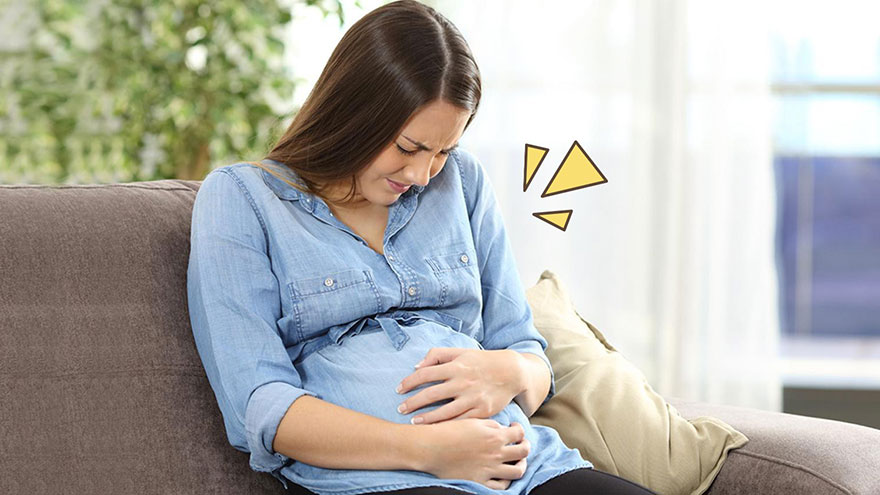About Bleeding and Cramping During Pregnancy
Bleeding is not uncommon during early pregnancy. In fact, it takes place in as much as 30 percent of pregnancies but only half of these result in a miscarriage. Always err on the side of caution and speak with your health care provider if you’re concerned about spotting, bleeding or cramping at any time during your pregnancy.

Early Spotting and Bleeding
Approximately 6 to 12 days after ovulation, a fertilized egg implants in the uterine lining if conception has taken place, which can result in implantation spotting, lasting a few hours to a few days.
Throughout pregnancy, sexual intercourse may result in a small amount of bleeding due to a cervix that becomes tender during pregnancy, explains the American Congress of Obstetricians and Gynecologists (ACOG). It is generally not necessary to cease sexual activity. However, contact your health care provider if you notice increased or heavy bleeding. Cramping in the lower abdomen along with painful urination or cloudy urine may signal a urinary tract infection. Contact your health care provider for diagnosis and an appropriate treatment if you suspect an infection. Left untreated, it can lead to preterm labor and a low birth weight baby, the American Academy of Family Physicians cautions.
Early Pregnancy Complications
Signs of a miscarriage early in pregnancy include vaginal bleeding that resembles a menstrual period, cramping stronger than menstrual cramps and tissue passing through the vagina, explains the ACOG. A molar pregnancy — where abnormal tissue grows rather than an embryo — may also cause bleeding.
Vaginal bleeding early in pregnancy that is accompanied by strong cramps and sharp abdominal pain may signal an ectopic pregnancy — where a fertilized egg implants in the Fallopian tube rather than the uterus. Contact your health care provider immediately. Wear a pad whenever you experience spotting or bleeding to more accurately monitor the discharge, advises the American Pregnancy Association. However, if you are bleeding, avoid sexual intercourse and never introduce anything into the vagina, such as through the use of a tampon, the Association advises.
Second and Third Trimester
An inflamed cervix or cervical growths may cause light bleeding in the second and third trimesters, both of which can often be treated with medication. Lower abdominal pain throughout pregnancy, generally felt on either side of the uterus and not accompanied by bleeding or other symptoms, may be round ligament pain, states the National Women’s Health Resource Center. It is the result of the stretching and thickening of your ligaments as your uterus grows in size and weight.
Contact your health care provider if you experience any of these symptoms to ensure a healthy pregnancy. Serious conditions that can result in vaginal bleeding in the second and third trimesters include placental previa — where the placenta covers the cervix — and placental abruption — where the placenta separates from the uterus — advises the ACOG, though the latter generally only occurs in the third trimester. Bleeding accompanied by stomach pain may be a sign of placental abruption; whereas bleeding without any other symptoms may signal placenta previa.
Labor and Preterm Labor
Late in the third trimester, your cervix begins to soften and thin in preparation for labor. As it does, tiny blood vessels in the cervix may rupture, causing a pink, red or brown-tinged mucus. This is common when it takes place within 3 weeks of your due date, the ACOG explains. However, if it happens several weeks or months prior and is accompanied by cramping or contractions or a low, dull backache, it may signal preterm labor. Contact your health care provider immediately.
Intermittent cramping or mild contractions are common during the final weeks of pregnancy. These are Braxton Hicks contractions — your body’s way of revving up for the big event. If contractions become regular in frequency, increase in intensity or feel like they are wrapping around from your back to your front, these may be real contractions.
You Might Also Like :: How to Use RU486 Safely

